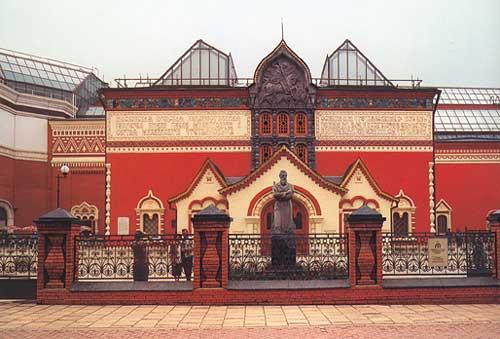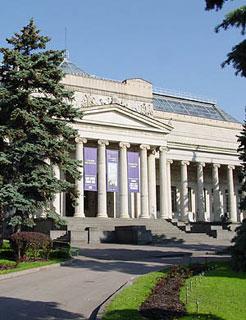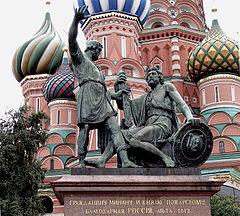
- •The English Alphabet
- •I тип чтения гласных букв в ударном слоге.
- •Буква е е
- •I тип чтения II тип чтения
- •Тренировочные упражнения
- •3. Буквы I, I [aɪ] и y,y [waɪ] в ударном слоге читаются:
- •I тип чтения II тип чтения
- •Тренировочные упражнения
- •I тип чтения II тип чтения
- •Тренировочные упражнения
- •Тренировочные упражнения
- •Тренировочные упражнения
- •Тренировочные упражнения
- •Тренировочные упражнения
- •Тренировочные упражнения
- •Тренировочные упражнения
- •10. Прочитайте вслух слова, объясните, по каким правилам они читаются:
- •My Family
- •Vocabulary
- •Ответьте на вопросы
- •Family and frriends (родственники и друзья)
- •Talking about family and friends (рассказывая о своей семье и друзьях)
- •Family names (имена)
- •Changing times (времена меняются)
- •Friends (друзья)
- •2. Заполните пропуски подходящим по смыслу словом
- •3. Ответьте на вопросы о себе.
- •4. Нарисуйте собственное семейное древо. Есть ли в нем родственники названия которых на английском языке Вам неизвестны?
- •1. Прочитайте диалог, затем послушайте и заполните пропуски.
- •2. А. Послушайте диалог и составьте собственный.
- •3. Составьте предложения, используя глагол “to be” в нужной форме.
- •4. Напишите утвердительные или отрицательные предложения, используя глагол “to be”.
- •5.Прочитайте и переведите.
- •6. Составьте общие вопросы, используя слова в скобках и глагол “to be”.
- •7. Составьте специальные вопросы с вопросительными словами What/Who/How/Where/Why ....? Используйте глагол “to be”.
- •8. Дайте краткие ответы.
- •9. Поставьте глагол “be” в нужной форме.
- •Личные местоимения
- •10. Заполните пропуски личными местоимениями I, he, she, it, we, you, they.
- •11. Замените выделенные существительные личными местоимениями he, she, it, we, they.
- •Притяжательные местоимения
- •15. Дополните предложения по образцу.
- •16. Дополните предложения по образцу.
- •17. Заполните пропуски притяжательными местоимениями mу/оur/yоur/his/her/their/its.
- •18. Дополните предложения абсолютными формами притяжательных местоимений mine, yours etc.
- •22. Употребите нужное возвратное местоимение (myself, itself, herself, yourself, themselves, ourselves, yourselves).
- •23. Дополните предложения возвратными местоимениями (myself, yourself etc.)
- •24. Перефразируйте предложения, используя возвратные местоимения (by myself, by yourself etc.)
- •My Friend
- •Vocabulary
- •Ответьте на вопросы
- •5. Ответьте на вопросы.
- •Describing character (описание характера)
- •2. Какой префикс используется для образования антонимов от следующих слов?
- •5. Какие существительные можно образовать от этих прилагательных?
- •Личное письмо другу
- •Present simple
- •1. Добавьте к глаголам окончания -s or -es.
- •4. Переделайте утвердительные предложения в отрицательные.
- •5. Дополните предложения глаголами в скобках. Все предложения отрицательные.
- •6. Дополните предложения глаголами в скобках, поставив их в утвердительную или отрицательную форму.
- •Вопросительные местоимения
- •11. Посмотрите на картинку и ответьте на вопрос, используя только одно слово.
- •12. Правильны ли следующие предложения? Исправьте их, если необходимо.
- •Topical vocabulary
- •My Working Day
- •Vocabulary
- •Ответьте на вопросы
- •2. Составьте словосочетания, соединив слова из левой и правой колонки.
- •3. Дополните диалог подходящими по смыслу словами из активного словаря.
- •4. Прочитайте и переведите на русский язык. Какие предложения вы используете наиболее часто на родном языке?
- •5. Прочитайте текст о буднях Ким и заполните пропуски словами, используя следующие словосочетания:
- •1. Прочтите диалог и подумайте, какие слова пропущены в вопросах?
- •2. Послушайте диалог и заполните пропуски.
- •3. Прочитайте и разыграйте диалог.
- •Статья о распорядке дня знаменитости
- •Артикли
- •1. Напишите артикль a или an.
- •2. Что это? Выберите слова из данного списка.
- •3. Какие у них профессии? Выберите слова из списка и дополните предложения.
- •4. Вставьте правильный артикль a/an или the.
- •5. Вставьте артикль the, где необходимо. Напишите ok, если предложение верное.
- •Единственное и множественное число
- •6. Напишите существительные во множественном числе.
- •7. Посмотрите на картинки и дополните предложения.
- •8. Некоторые предложения правильные, а некоторые содержат ошибки. Найдите ошибки и исправьте их.
- •Исчисляемые и неисчисляемые существительные
- •9. Подпишите названия предметов на картинках. Некоторые из них исчисляемые, некоторые неисчисляемые. Используйте артикль a/an, где необходимо.
- •10. Найдите ошибки, вставьте артикль a/an, где необходимо. Некоторые предложения правильные.
- •11. Назовите предметы на картинках, используя данные слова и выражение a… of… .
- •12. Вставьте a/an или some.
- •Указательные местоимения
- •13. Образуйте множественное число:
- •14. Дополните предложения, используя указательные местоимения this, that, these or those.
- •Topical vocabulary
- •My Flat
- •Vocabulary
- •Ответьте на вопросы
- •Rooms (комнаты)
- •2. Представьте, что Вы на кухне. Куда бы Вы положили следующие предметы:
- •3. Здесь зашифрованы названия предметов, которые находятся в гостиной или на кухне. Что это и где находится?
- •4. Дополните предложения наречием или предлогом.
- •5.Напишите:
- •2. Картинки изображают шесть вещей, которые сделал человек этим утром. Дополните предложения.
- •Объявление о недвижимости
- •Оборот there is/ there are
- •2. Поставьте следующие предложения в вопросительную и отрицательную форму:
- •3. Кенхам - маленький город. Посмотрите на информацию в таблице и напишите предложения об этом городе, используя There is / There are
- •4. Вставьте there is/there isn't /is there /there are/there aren't /are there
- •5. Вставьте there's / is there / it's / is it.
- •6. Переделайте следующие предложения, используя оборот there is/there are:
- •7. Поставьте вопросы к выделенным словам:
- •9. Вставьте there was / there wasn't / was there / there were / there weren't / were there.
- •Неопределенные местоимения
- •10. Вставьте some or any.
- •12. Дополните предложения, используя some or any
- •13. Вставьте something/somebody/anything/anybody.
- •14. Перепишите предложения, используя - no
- •15. Перепишите предложения, используя - any
- •16. Вставьте no or any
- •17. Вставьте no, any or none
- •Topical vocabulary
- •Прочитайте и переведите текст Sports
- •Vocabulary
- •Ответьте на вопросы
- •Прочитайте текст и выполните к нему задание What does a "Healthy Life" Mean?
- •3. Напишите:
- •4. Заполните предложения подходящим словом.
- •Sport and leisure sports (виды спорта)
- •Outdoor leisure activities (досуг на свежем воздухе)
- •2. Заполните пропуски соответствующими глаголами.
- •3. Дополните предложения подходящими словами.
- •4. Ответьте на вопросы.
- •Способы выражения будущего времени
- •2. Прочитайте интерью с профессором Гарри Врумом, найдите в тексте и подчеркните 15 глаголов, которые выражают будущее время.
- •3. Поставьте глаголы в скобках в Future Indefinite Tense:
- •4. Посмотрите на записи Тома и Хизер, затем, используя настоящее длительное время, расскажите о их планах на неделю.
- •5. Заполните пропуски will или выражением be going to, в соответствии с правилами.
- •6. Раскройте скобки, используя оборот to be going to.
- •7. Поставьте глаголы в скобках в Future Simple, be going to, Present Continuous, как в примере.
- •8. Поставьте глаголы в скобках в Future Continuous Tense:
- •9. Поставьте глаголы в скобках в Present Simple или Future Simple.
- •10. Раскройте скобки, употребляя глаголы в одном из будущих времен: Future Simple, Future Continuous, Future Perfect.
- •Topical vocabulary
- •Travelling
- •Vocabulary
- •Ответьте на вопросы
- •Means of transport
- •1. Разделите следующие виды транспорта на три группы: передвигающиеся по земле, по воздуху и по воде.
- •2. Какие виды транспорта вы ассоциируете с данными прилагательными?
- •3. Сравните виды транспорта, используя прилагательные из предыдущего упражнения: a) plane and train; b) bicycle and automobile; c) bus and taxi.
- •4. Заполните пропуски данными словами, подходящими по смыслу:
- •5. Составьте диалог о путешествии, используя данный план:
- •1. Образуйте сравнительную и превосходную степень следующих прилагательных. Не забудьте употреблять определенный артикль перед превосходной степенью прилагательных.
- •2. Напишите прилагательные в сравнительной степени.
- •3. Напишите противоположное по смыслу прилагательное в сравнительной степени.
- •4. Дополните предложения, используя сравнительные степени прилагательных.
- •5. Дополните предложения, используя сравнительный союз than.
- •7. Напишите предложения, используя сравнительную конструкцию as….As….
- •8. Вставьте союз as или than.
- •9. Дополните предложения, используя превосходные степени прилагательных (the oldest etc.).
- •10. Раскройте скобки, употребляя требующуюся форму прилагательного.
- •11. Вставьте as ... As или so ... As.
- •Topical vocabulary
- •Learning Foreign Languages Becomes More Popular in Russia
- •Vocabulary
- •Ответьте на вопросы
- •Attitudes to english
- •1. Послушайте шесть человек, рассказывающих о своем отношении к изучению английского языка, сделайте для себя заметки. Чье мнение совпадает с Вашим?
- •2. Послушайте еще раз и заполните пропуски в предложениях:
- •Past simple
- •2. Напишите вторую форму следующих глаголов.
- •3. Напишите предложения о прошлом (yesterday/last week etc.).
- •4. Дополните предложения глаголом в отрицательной форме.
- •5. Задайте общие вопросы к следующим предложениям.
- •6. Напишите утвердительные или отрицательные предложения о том, что Вы делали вчера.
- •7. Составьте вопросы, начинающиеся с Who/What/How/Why …?
- •8. Поставьте глаголы в скобках в прошедшее время ( утвердительную, отрицательную или вопросительную).
- •9. Прочтите и переведите следующие предложения на русский язык.
- •10. Поставьте глаголы в скобках в Past Indefinite.
- •11. Поставьте следующие предложения в отрицательную форму.
- •12. Сделайте следующие предложения утвердительными.
- •13. Задайте общие и специальные вопросы к следующим предложениям.
- •Topical vocabulary
- •Geographical Position of the Russian Federation
- •Vocabulary
- •Ответьте на вопросы
- •The Russian Federation: Physical Features
- •Passive voice
- •3. Напишите следующие предложения в страдательном залоге.
- •Прочитайте текст Russian Federation: Political System and Economy
- •Vocabulary
- •Страдательный залог временной группы indefinite (продолжение)
- •1. Раскройте скобки, употребляя глаголы в Present, Past или Future Simple Passive.
- •2. Раскройте скобки, употребляя, требующуюся форму глагола.
- •3. Переведите следующие предложения на английский язык.
- •Сочетание модальных глаголов с инфинитивом страдательного залога
- •4. Переведите на русский язык:
- •5. Откройте скобки, образуя инфинитив в форме страдательного залога, по образцу:
- •6. Переведите на английский язык:
- •Topical vocabulary
- •Vocabulary
- •The Kremlin
- •The Uspensky (Assumption) Cathedral
- •The Archangelsky Cathedral
- •The Blagoveshchensky (Annunciation) Church
- •The Tretyakov Gallery
- •Pushkin Museum of Fine Arts
- •The Tsar-Bell
- •Present continuous
- •1. Дополните предложения, поставив глаголы, данные в скобках, в настоящее длительное время:
- •2. Напишите, что происходит в данный момент.
- •3. Что делают люди на картинках? Для каждой картинке напишите по предложению, используя данные в скобках слова:
- •6. Задайте вопросы, предварительно прочитав ответы.
- •Topical vocabulary
- •Vocabulary
- •Ответьте на вопросы
- •Vocabulary
- •Present continuous passive
- •1.Переведите на русский язык:
- •2. Поставьте глагол, данный в скобках, в Continuous Passive.
- •3. Замените глагол-сказуемое в действительном залоге на соответствующую форму Continuous в страдательном залоге. Обратите внимание на место послелога и предлога:
- •4. Поставьте глаголы, данные в скобках, в нужном времени Indefinite или Continuous Passive:
- •The united kingdom of great britain
- •Vocabulary
- •Ответьте на вопросы
- •Perfect tenses present perfect
- •1. Прочтите и переведите следующие предложения:
- •2. Измените по лицам глагол-сказуемое в следующих предложениях:
- •3. Поставьте на правильное место в предложении наречия и обстоятельства, заключенные в скобках:
- •4. Дополните предложения, раскрывая скобки и ставя глаголы в Present Perfect.
- •5. Дополните предложения.
- •6. Выберите верный вариант.
- •7. Ответьте на вопросы:
- •8. Прочтите ситуации и составьте предложения, используя глаголы, данные в скобках
- •9. Посмотрите на картинку. Что случилось? Составьте предложения, используя данные словосочетания:
- •10. Вы пишите письмо другу. В письме Вы рассказываете об изменениях, произошедших с Вами и другими людьми. Используйте данные слова и напишите предложения в the Present Perfect:
- •11. Напишите вопросы, начиная с “How long…? “
- •Past perfect
- •13. Дополните предложения, раскрывая скобки, употребите наречия just, already or yet.
- •14. Прочтите ситуации и составьте предложения со словами, данными в скобках.
- •15. Прочтите ситуации, составьте предложения со словами, данными в скобках, заканчивая словом “before”.
- •Vocabulary Ответьте на вопросы
- •1.Переведите предложения на русский язык и объясните употребление времен:
- •2. Раскройте скобки, употребляя глаголы в Past Simple или Past Perfect:
- •3. Раскройте скобки, употребляя глаголы в Past Simple, Past Continuous и Past Perfect:
- •4. Поставьте глаголы, данные в скобках в верную форму “Past Perfect” (I had done etc.) or Past Simple (I did etc.)
- •Vocabulary
- •Ответьте на вопросы
- •Perfect tenses passive
- •1. Переведите на русский язык:
- •2. Скажите, что действие, о котором идет речь и которое происходит в данный момент, уже выполнено, по образцу:
- •3. Откройте скобки и поставьте глагол в нужное время активного или страдательного залогов:
The Kremlin
The Moscow Kremlin is the heart of the country. It is a great monument of Russian and world architecture. It was built in the shape of a triangle on the left bank of the Moskva River. The Kremlin has 20 towers, of which four have gates. There you can see the wonderful white-stone monuments of the 15th — 16th centuries.
The Uspensky (Assumption) Cathedral
The Uspensky (Assumption) Cathedral (1475-1479), architect Aristotle Fioravante from Italy.
It was here that the Russian tsars and emperors were crowned. The Cathedral is oblong, with an arched roof supported by four columns and crowned by fine golden
domes. You can see some very fine old frescoes there.
The Archangelsky Cathedral
The Archangelsky Cathedral was built in 1505-1508 by the Italian architect, Aleviso Novy. It is cubical in shape, with fine domes. The tombs of the Moscow Princes and tsars are here.

The Blagoveshchensky (Annunciation) Church
The Blagoveshchensky (Annunciation) Church was built in 1484 by architects from Pskov and enlarged in 1542 during the reign of Ivan the Terrible. The cathedral's icons include works by the oldest Russian artists: Theophanes Grek, Andrey Rublev and Prokhor of Gorodets. The murals of 1508 are the work of Feodosy, the son of Dionysius.
The Majestic Campanile of Ivan Veliky was built in 1505-1508 and was completed in 1600 during the reign of Boris Godunov. It was, in ancient times, the Kremlin watch-tower. It is 81 m high.
The Tretyakov Gallery
T he
building was built from a design by the famous Russian artist V.
Vasnetsov at the beginning of the 20th century. The Gallery was
founded by Pavel Tretyakov in 1856. In 1892, Tretyakov donated his
collection (1,287 paintings, 518 drawings and 9 sculptures) to the
city of Moscow. Now the gallery owns some 100 thousand works of art.
he
building was built from a design by the famous Russian artist V.
Vasnetsov at the beginning of the 20th century. The Gallery was
founded by Pavel Tretyakov in 1856. In 1892, Tretyakov donated his
collection (1,287 paintings, 518 drawings and 9 sculptures) to the
city of Moscow. Now the gallery owns some 100 thousand works of art.
The Tretyakov Gallery is famous for its collection of Russian icons (by the famous Andrey Rublev — 14-15th centuries, by Monysius — 15th century) and the collection of Russian paintings of the 20th century.
Pushkin Museum of Fine Arts
P ushkin
Museum of Fine Arts (architect R. L Klein).
ushkin
Museum of Fine Arts (architect R. L Klein).
It was built in 1898-1912.
This is a museum of the history of world art from ancient times (4th millennium, B.C.) to our day. It is one of the largest collections of paintings, graphic art, sculpture and applied art in Russia, being second only to the State Hermitage in St. Petersburg. The Museum contains originals or excellent copies of works by outstanding artists of ancient Babylon, Egypt, Rome, Greece and Western Europe.
The exhibits there include Egyptian mummies and statues of Pharaohs; the pillar with the laws of King Hammurabi of Babylon inscribed on it (2000 B. C.); copies of Hellenic statues by Phidias and Praxiteles; Etruscan vases which are over 2000 years old. Also on display are originals by famous German, French painters and European sculptors of the 17th-18th centuries.
The Monument of K. Minin and D. Pozharsky
T his
is the first civil monument in Moscow. The monument was erected with
money raised by public subscription. It was set up in 1818 by Ivan
Martos. Up until 1930 it stood in the centre of Red Square.
his
is the first civil monument in Moscow. The monument was erected with
money raised by public subscription. It was set up in 1818 by Ivan
Martos. Up until 1930 it stood in the centre of Red Square.
A Bit of History: after the death of the first False Dmitry, the Polish invaders on September 21, 1610 entered Moscow and settled in the Kremlin. The foreign rule was oppressive and led to a broad liberation movement.
In September, 1611, Kuzma Minin, a merchant, appealed to the residents of Nizhny Novgorod, a large trading centre on the Volga, to come to the aid of the Moscow state. He urged them to give all they had in order to save the homeland from foreign enslavement. A lot of people joined him and helped him with the money, and many enrolled in the volunteer army led by Prince Dmitry Pozharsky, who was known for his courage. In August 1612, the main forces of the volunteer army reached Moscow and began an offensive against the foreign invaders. On October 26, the Kremlin, the last stronghold of the Poles, was liberated.
